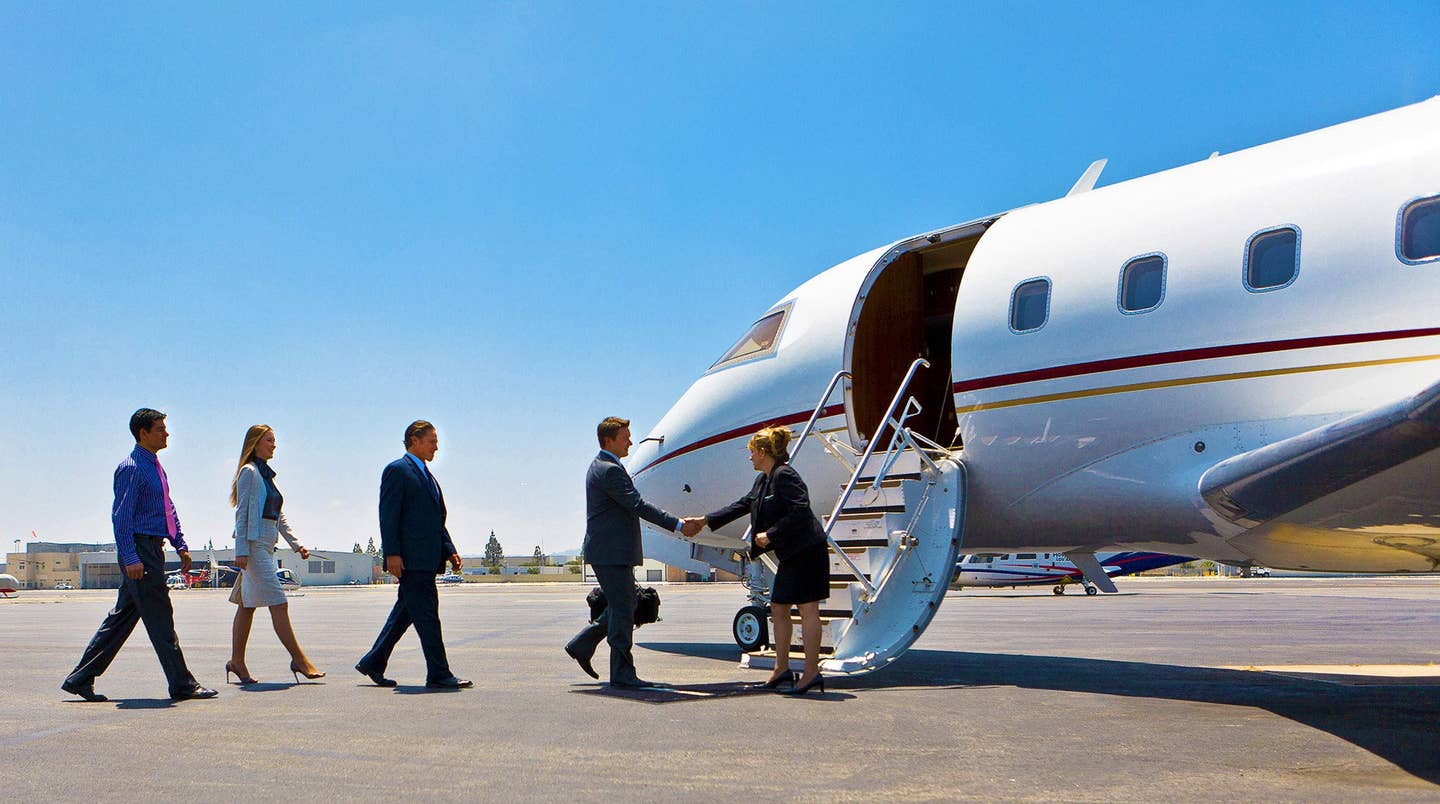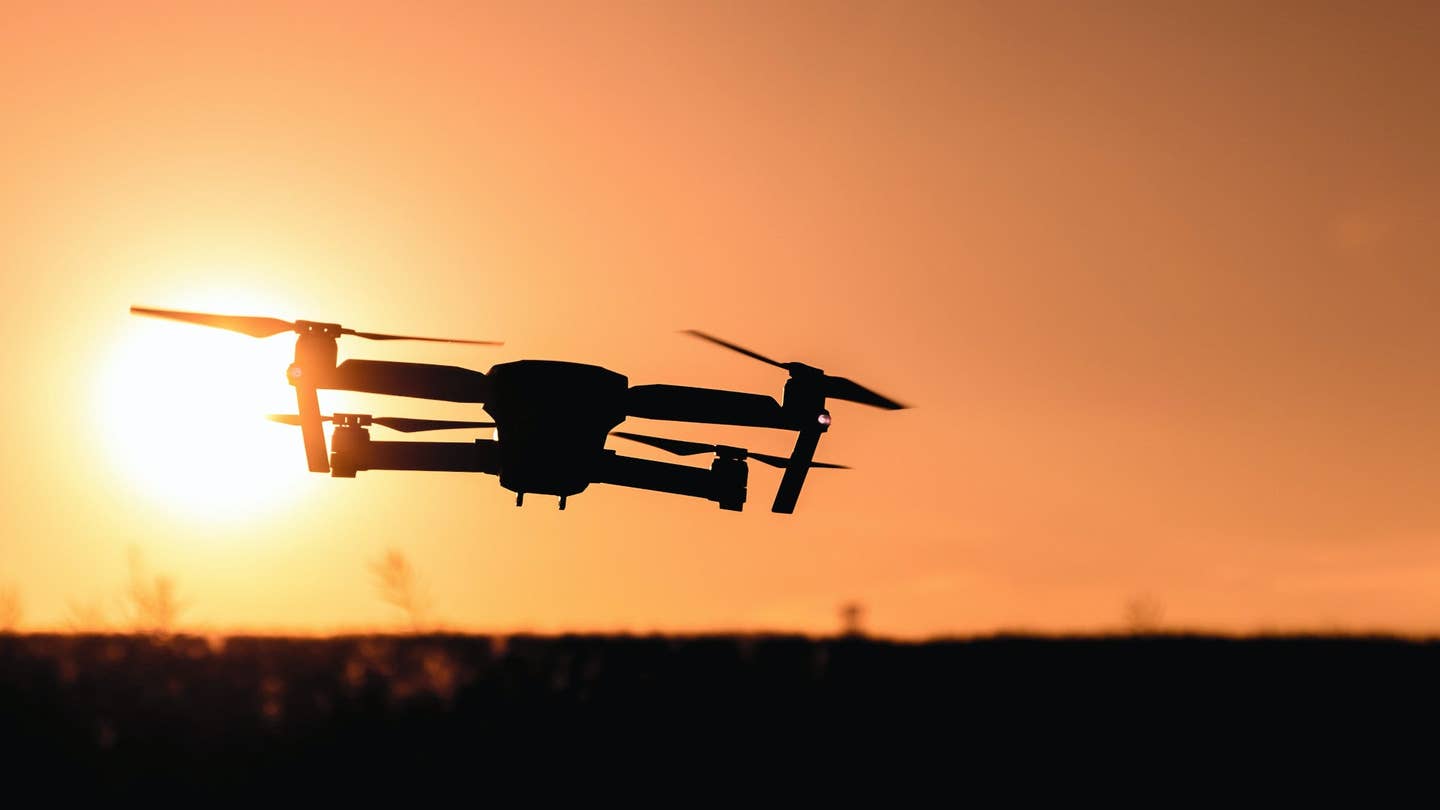All You Need To Know About Private Jet Insurance
Private jet insurance coverage is essential when it comes to limiting your financial risk when the unexpected happens while operating your aircraft.

If you have assets to protect, then insurance is a good idea. [Credit: Shutterstock]
In the world of aviation, when something goes wrong, it's rarely an inexpensive issue or a cheap fix. That's especially true when it comes to private jet operations. If the roof of your hangar fell on your aircraft, would you be able to cover the repair bill? Private jet insurance is designed to limit potential financial liability and is an operational expense that's a necessity for covering your aviation assets, whether you fly for business or pleasure.
Easily become an airplane or commercial pilot online! Courses designed by industry experts can help you pass FAA tests and get into the sky!
Enroll NowWhat Is Aircraft Insurance?
Just like that last pre-departure check of your flight plan, aviation insurance is a pilot's or aircraft operator's backstop in the event of an incident. Through the purchase of an annual policy, private jet insurance offers financial protection from some of the risks that come with aircraft operation. In general, policies can cover liability, medical, legal defense, as well as physical damage to the aircraft itself.
"Insurance is not a wasted cost just because it may be required only once despite years of paying for it," said aircraft accident litigators Holland & Knight. "See it as a protective wrapper shielding your personal wealth from claims exposure."
Some of the typical elements of coverage, according to the firm, include coverage for damage or destruction to the airframe, covering the cost of a spare engine, coverage for property damage or loss of life, and even coverage for any damage that occurs as a result of war.
Do I Need Private Jet Insurance?
If you're flying, you should be buying insurance.
"There is no question of whether or not to get aircraft insurance, but rather from whom to get it, how much coverage is necessary, where to find the best rates, and so on," according to Jet Advisors.
Unlike other expenses, pilots have some control over the cost of their insurance bill. Some strategies include:
- Fly more often to keep skills fresh. A general rule of thumb is that flying 200 hours or more each year is one way to improve your insurance rate.
- Increase pilot training. Some insurance companies require yearly recurrent training for pilots of multiengine or high-performance aircraft as a condition of maintaining coverage. Check with your company because, even if not required, completing a training program could improve your rates.
- Consider adding to your pilot certificates and/or ratings. Acquiring ratings for instruments, seaplanes, or multiengine could help chip away at your insurance rate.
- Join an aircraft type club or pilots association, which could have a beneficial relationship with insurers.
- Keep up communication with your insurance broker and ask for advice about how to make the most of your training and new ratings.
"A private jet insurance policy is designed to provide peace of mind and protection that should make you financially whole again in the event of an accident or incident," according to BWI Aviation Insurance.
The insurance landscape also looks different for those who rent their aircraft.
Most general aviation pilots rent, which means the companies supplying aircraft require pilot-paid renter's insurance before takeoff. Policies can be purchased on a monthly or annual basis—and in the case of aviation insurer SkyWatch—based upon usage and for as little as $5 a day.
How Much Does Private Jet Insurance Cost?
When considering the cost of private jet insurance, how much will it set you back? Short answer: It depends.
Premium costs are driven by numerous factors, including the type of aircraft you're operating, your experience and track record as a pilot, and where your aircraft is hangared or tied down, as well as the safety record of the aircraft to be insured.
Liability coverage, for example, varies based on the replacement cost of your aircraft, and how much it would cost to buy a similar aircraft.
The cost of premiums averages about 14 percent of the hull value of the aircraft, according to NovaJet Aviation Group. "The accepted standard liability is $200,000,000, but this will slightly vary depending on the age of the aircraft, type of ownership, and the aircraft use," the Canadian aircraft management company said. That means for a Cessna Citation X business jet valued at about $10 million, for example, the annual premium would be about $30,000, the company said.
"Private jet insurance can range from $10,000 a year to $500,000 per year, depending on the liability limits requested, aircraft use (private vs commercial), hull coverage requested, pilot qualifications, etc.," according to BWI Aviation Insurance.
It's best to start with a conversation with an insurance broker, the company said.
"There are many variations, exclusions, and coverage differences between private jet insurance policies, always consult your exact policy for coverage details," it advises.
What Does Aircraft Insurance Cover?
Aircraft insurance covers property damage to the aircraft, as well as other potential financial risks that come with operating a plane, such as liability for errors.
Here are some common types of coverage:
Stationary Ground Risk Hull Coverage
Ground risk hull insurance coverage is protection for incidents or mishaps that occur while your aircraft is still on the ground and not moving. This coverage would apply to incidents of vandalism or storm damage, such as hail.
In-Motion Ground Risk Hull Coverage
Ground risk hull insurance coverage is for times when the aircraft is moving is protection for incidents that occur while your aircraft is not yet airborne, such as while taxiing or during takeoff.
In-Flight Coverage
When shopping around for coverage, clarify whether or not your policy covers damage while the aircraft is in the air. Not all policies do.
Liability Coverage
Liability coverage is typically standard with private jet insurance policies, and protects you from financial risk should your aircraft operation lead to injury or property damage.
This coverage also typically comes with a legal defense for lawsuits stemming from the operation of your plane, according to BWI. "Private jet liability insurance is typically offered starting at $1,000,000 per occurrence and limited to $100,000 per passenger," it said.
Where Do I Find Private Jet Insurance?
The first step in securing private jet insurance and determining optimal coverage levels is to consult an insurance company or broker who specializes in aviation.
BWI Fly Aviation Insurance
BWI Fly specializes in offering a range of insurance policies for private jet owners and operators.
AssuredPartners Aerospace
AssuredPartners Aerospace offers a wide variety of aviation insurance, such as for pilots who rent aircraft, owners, instructors, flying clubs, drone operators, and aviation businesses.
Jet Advisors Insurance
Jet Advisors offers a range of services, from private jet sales to charters, and aircraft insurance.
Coverage For Your Aviation Assets
Private jet insurance coverage is essential when it comes to limiting your financial risk when the unexpected happens. FLYING keeps you covered when it comes to all the latest news in aviation. Lock down your subscription here.
FAQ
What does a private jet cost?
The cost of private jet insurance varies depending on the aircraft, its age, the pilot's experience, and rating levels.
How much is aircraft insurance?
While the cost of aircraft insurance varies due to policy coverage and the type of aircraft to be insured, light aircraft policies can start from as little as $1,200 to $2,000 each year, according to Avion Insurance, depending on the type of operations planned by the owner. According to jet insurer BWI, private jet insurance can range from $10,000 to $500,000 annually.
Do I need to insure my private jet?
Aircraft insurance is necessary to protect against the financial risk from injury or property damage occurring while operating your aircraft.

Subscribe to Our Newsletter
Get the latest FLYING stories delivered directly to your inbox







